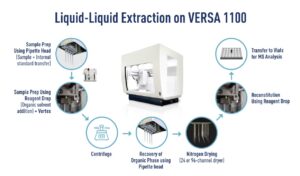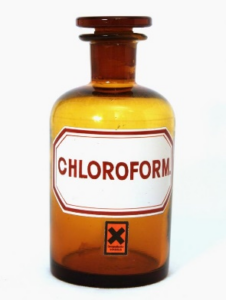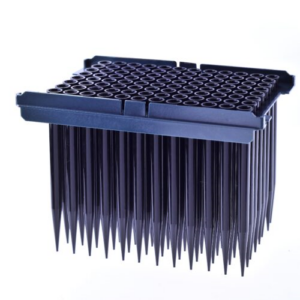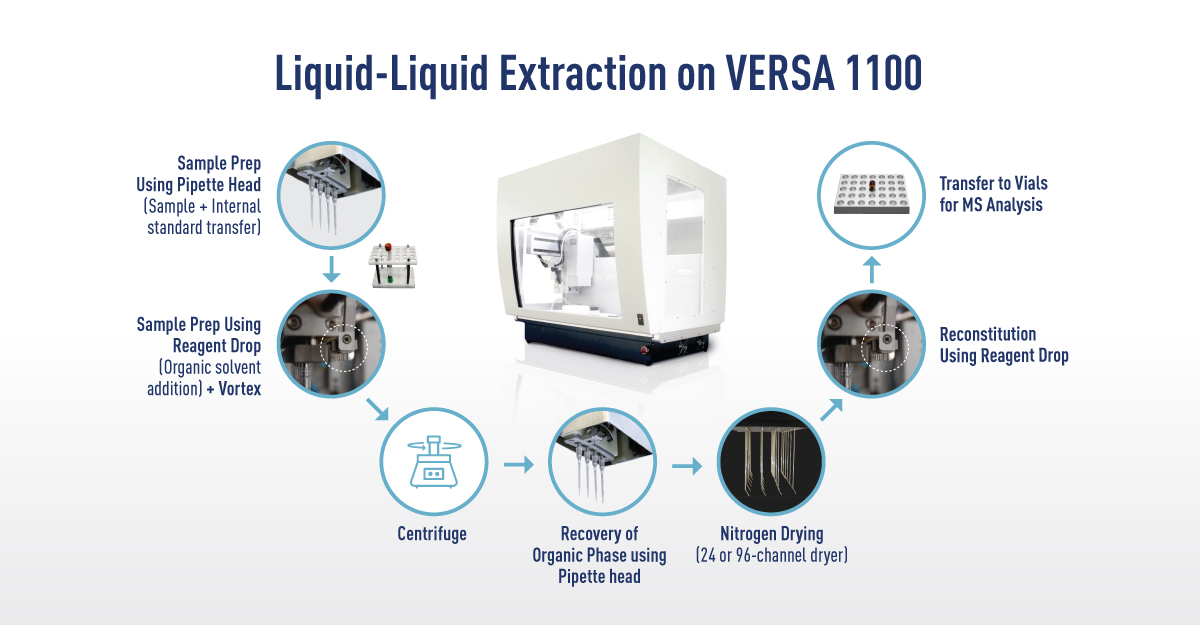Ever found yourself frustrated with the inconsistencies in your analyte extraction results? Does the repetitive nature of manual liquid-liquid extraction leave you fatigued? Has managing large sample sizes ever seemed like a bottleneck in your workflow?
If these questions resonate with your experiences, you are not alone. Whether you are engaged in different Liquid-liquid extraction applications, join us as we delve into challenges researchers encounter with manual extraction and the promising solutions offered by automation, focusing on methods including but not limited to Bligh & Dyer.
Bligh and Dyer Workflow using Liquid-Liquid Extraction:

This figure highlights the workflow of the Bligh and Dyer method. All steps mentioned are automated on the VERSA 1100 except for the centrifugation step which involves manual intervention.
Challenges with Manual Bligh and Dyer | How are they overcome by VERSA 1100? |
| Inconsistency and Variability: Due to human errors, variations in pipetting techniques can lead to inconsistent results affecting the reproducibility of the experiment. |
|
| Labor Intensity and Time consumption: A human performing repetitive tasks can deal with fatigue and increased chances of error. |
|
| Safety Concerns: Performing lipid extraction using LLE manually can expose researchers to strong organic vapors for example when performing nitrogen drying over chloroform. |
|
| Scalability Issues: Scaling up the extraction process can be challenging especially when dealing with a large number of samples. | 10-15mL test tubes:
96-deep well plates:
|

Tip compatibility:
Our team is committed to quality assurance with respect to tip compatibility with strong solvents like chloroform. We have conducted rigorous testing which involved exposing our tips to various concentrations of chloroform to replicate real-world laboratory scenarios. Our testing highlighted that during the quick transfer of chloroform using our compatible tips, resulted in low to no interference. The VERSA 1100 also ensures low risk of cross contamination by disposing tips in a tip chute that is part of the deck after every transfer.

In conclusion, the manual Bligh and Dyer method has historically posed challenges in lipidomics, characterized by inconsistency, labor intensity, safety concerns and scaling issues. However, with the VERSA 1100’s automation technology, these obstacles are overcome to significantly enhance the efficiency and precision of lipid extraction in addition to contributing more accurate and reproducible analysis of lipid profiles. This technological evolution subsequently marks a crucial step forward in lipidomics research paving the way for advancements in health, nutrition and environmental studies.



